
Rick Dangerous is a platform game developed by Core Design for the Acorn Archimedes, Amiga, Atari ST, Amstrad CPC, ZX Spectrum, Commodore 64, and MS-DOS. The game was released in 1989 and published by MicroProse on the Firebird Software label in the UK, and on the MicroPlay label in America. It was also published in Spain by Erbe Software. Later, it was released with two other games, Stunt Car Racer and MicroProse Soccer, on the Commodore 64 Powerplay 64 cartridge. The game was followed by a sequel, Rick Dangerous 2, in 1990. Loosely based on the Indiana Jones film franchise, the game received mixed reviews from critics.

Stunt Car Racer is a racing video game developed by Geoff Crammond. It was published in 1989 by MicroProse, under their MicroStyle and MicroPlay labels in the United Kingdom and in the United States, respectively. The game pits two racers on an elevated track on which they race in a head-to-head competition, with ramps they must correctly drive off as the main obstacle.
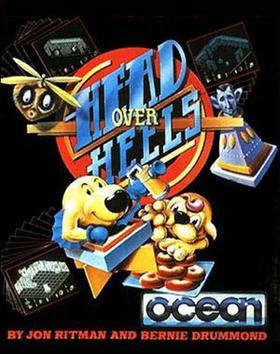
Head Over Heels is an action-adventure game published by Ocean Software in 1987 for several home computers. It uses an isometric engine similar to the Filmation technique first developed by Ultimate Play the Game. Head Over Heels is the second isometric game by Jon Ritman and Bernie Drummond, after their earlier Batman computer game was released in 1986. The game received favourable reviews and was described by Zzap!64 as an "all time classic".
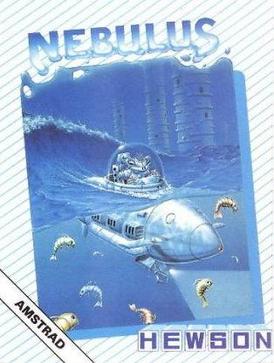
Nebulus is a platform game created by John M. Phillips and published by Hewson Consultants in the late 1980s for home computer systems. International releases and ports were known by various other names: Castelian, Kyorochan Land, Subline, and Tower Toppler.

Rick Dangerous 2 is a platform game developed by Core Design for the Amiga, Atari ST, Amstrad CPC, ZX Spectrum, Commodore 64, and MS-DOS. It was released in 1990 and published by Micro Style as a sequel to Rick Dangerous.

Kwik Snax is an arcade style maze video game play developed by the Oliver Twins and was published in 1990 by Codemasters for the Amstrad CPC, Spectrum, Commodore 64, MS-DOS, and Amiga. It was the fifth game in the Dizzy series and is considered a sequel to Fast Food.

Tau Ceti is a video game published in 1985 by CRL for the ZX Spectrum and converted to the Amstrad CPC, Amstrad PCW, Atari ST, Commodore 64, and MS-DOS. It was designed and programmed by Pete Cooke. The world, set on Tau Ceti III orbiting Tau Ceti, is displayed using 3D graphics with shadow effects. The planet has a day and night cycle.

Spindizzy is an isometric video game released for several 8-bit home computers in 1986 by Electric Dreams Software. It combines action and puzzle video game elements. Players must navigate a series of screens to explore a landscape suspended in a three-dimensional space. Development was headed by Paul Shirley, who drew inspiration from Ultimate Play the Game games that feature an isometric projection.
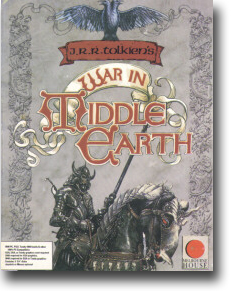
War in Middle Earth is a real-time strategy game released for the ZX Spectrum, MSX, Commodore 64, Amstrad CPC, MS-DOS, Amiga, Apple IIGS, and Atari ST in 1988 by Virgin Mastertronic on the Melbourne House label.

Aliens: The Computer Game is a 1986 video game developed by Software Studios and published by Electric Dreams Software initially for Amstrad CPC, Commodore 64 and ZX Spectrum. It is based on the film of the same title. Ports for the Commodore 16 and MSX were developed by Mr. Micro and published in 1987.
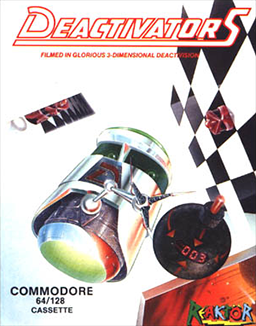
Deactivators is a 1986 puzzle video game designed by David Bishop and Chris Palmer, developed by Tigress Marketing and System Software, and published by Ariolasoft's action game imprint Reaktor. The player controls bomb disposal robots known as deactivators and must use them to deactivate bombs planted by terrorists in five research complexes. The concept for the game came from a brainstorming session between Bishop and Palmer; its design and development took five to six months to complete. It was released for the Amstrad CPC 464, Commodore 64, and ZX Spectrum platforms in October 1986.

Zub is a 1986 platform video game designed by Ste and John Pickford, developed by Binary Design, and published by Mastertronic for the Amstrad CPC, Commodore 64 and ZX Spectrum. The game has the player control Zub, who has to travel to different planets to retrieve the Green Eyeball of Zub. A parody of the game Light Force, called Lightfarce, was added in as an easter egg. The music on all computers was composed by David Whittaker.
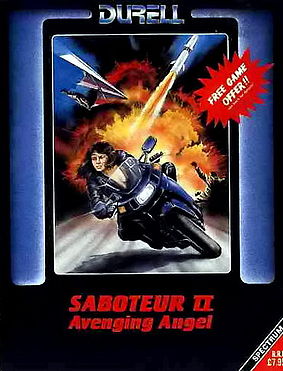
Saboteur II: Avenging Angel, also known as Saboteur 2, is an action-adventure game created by Clive Townsend and released by Durell Software in 1987 for the ZX Spectrum, Amstrad CPC, Commodore 64, and MS-DOS compatible operating systems. A sequel to 1985's Saboteur, the player controls a sister of Ninja from the first game on a mission to avenge his death. Saboteur II was one of the first action-adventure games with a female protagonist and was well received by critics.

Dark Side is a 1988 video game published by Incentive Software for the Amiga, Atari ST, Amstrad CPC, Commodore 64, IBM PC compatibles, ZX Spectrum, and Sharp MZ-800. The game is a sequel to Driller, set in the Evath system but this time on Evath's second moon Tricuspid.

Equinox is an action video game released by Mikro-Gen in 1986 for the ZX Spectrum, Amstrad CPC, and Commodore 64.

Light Force is a 1986 vertically scrolling shooter designed by Greg Follis and Roy Carter, developed by their company Gargoyle Games, and published under their Faster Than Light imprint. It was released for the Amstrad CPC, Commodore 64, and ZX Spectrum platforms.

Silicon Dreams is a trilogy of interactive fiction games developed by Level 9 Computing during the 1980s. The first game was Snowball, released during 1983, followed a year later by Return to Eden, and then by The Worm in Paradise during 1985. The next year they were vended together as the first, second and last of the Silicon Dreams.

Ace is a combat flight simulator video game published for the Commodore 64, VIC-20, and Plus/4 in 1985 by Cascade Games. It was ported to the Amstrad CPC, Amstrad PCW, Amiga, and ZX Spectrum.

Judge Dredd is a 1991 platform shoot 'em up video game based on the character of the same name. It was developed by Random Access and published by Virgin Mastertronic. It was released in Europe in 1991, for the Amiga, Atari ST, Commodore 64, and ZX Spectrum. Critics found the gameplay repetitive.

BraveStarr is a 1987 action game developed by Probe Software and published under U.S. Gold's Go! label. Based on the animated series and toyline of the same name, the player assumes the role of Marshal BraveStarr.



















